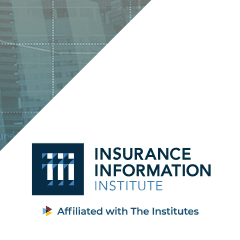
The Los Angeles office of the National Weather Service predicted prolonged, potentially record-setting heat and dangerous weather conditions throughout California this summer – and, some experts expect it to continue for some time beyond.
“If you like 2020, you’re going to love 2050,” said Michael Gerrard, director of Columbia University’s Sabin Center for Climate Change Law, in a recent Los Angeles Times article.
These conditions can only exacerbate this year’s atypical wildfire activity in the state. So, it should be no surprise that California is grappling with how to stop insurers from abandoning fire-prone areas, leaving countless homeowners at risk.
“Years of megafires have caused huge losses for insurance companies, a problem so severe that, last year, California temporarily banned insurers from canceling policies on some 800,000 homes in or near risky parts of the state,” The New York Times reports. “However, that ban is about to expire and can’t be renewed, and a recent plan to deal with the problem fell apart in a clash between insurers and consumer advocates.”
Insurers are widely expected to continue their retreat.
“The marketplace has largely collapsed” in high-risk areas, said Graham Knaus, executive director of the California State Association of Counties. “It’s a very large geographic area of the state that is facing this.”
California, where regulations lean toward consumer protection, is particularly challenged. The state doesn’t let insurers set premiums based on what they expect in future damages. They can only set rates based on prior losses. They also aren’t allowed to pass along reinsurance costs to policyholders – costs that are expected to rise as fire risks worsen.
State lawmakers introduced a bill to let insurers writing coverage in wildfire-prone areas incorporate climate predictions and other costs into their rate requests in return for making coverage more available and offering discounts to people who take steps to reduce their home’s vulnerability.
Insurers supported the change, as did the counties association and the union representing firefighters. But the bill faced strong opposition from consumer groups, who ultimately prevailed. Last month, the state senate stripped most of the provisions from the bill and directed the insurance commissioner to review the current rules and report back to the legislature in two years.
The legislature ended its session without acting on the revised version. Insurance Commissioner Ricardo Lara said his focus now is working with high-risk communities to reduce their wildfire risk enough that insurers will keep offering coverage without big rate increases.
“If Californians do our part to protect homes from wildfire,” Lara said, the industry should respond by agreeing to insure those homes.
Janet Ruiz, Triple-I’s director of strategic communications, said, “Insurers in California are working with legislators and the California Department of Insurance to find solutions to keep homeowners insured in wildfire risk areas. The industry supports mitigation efforts, the California FAIR Plan, and the proposed IMAP program.”







